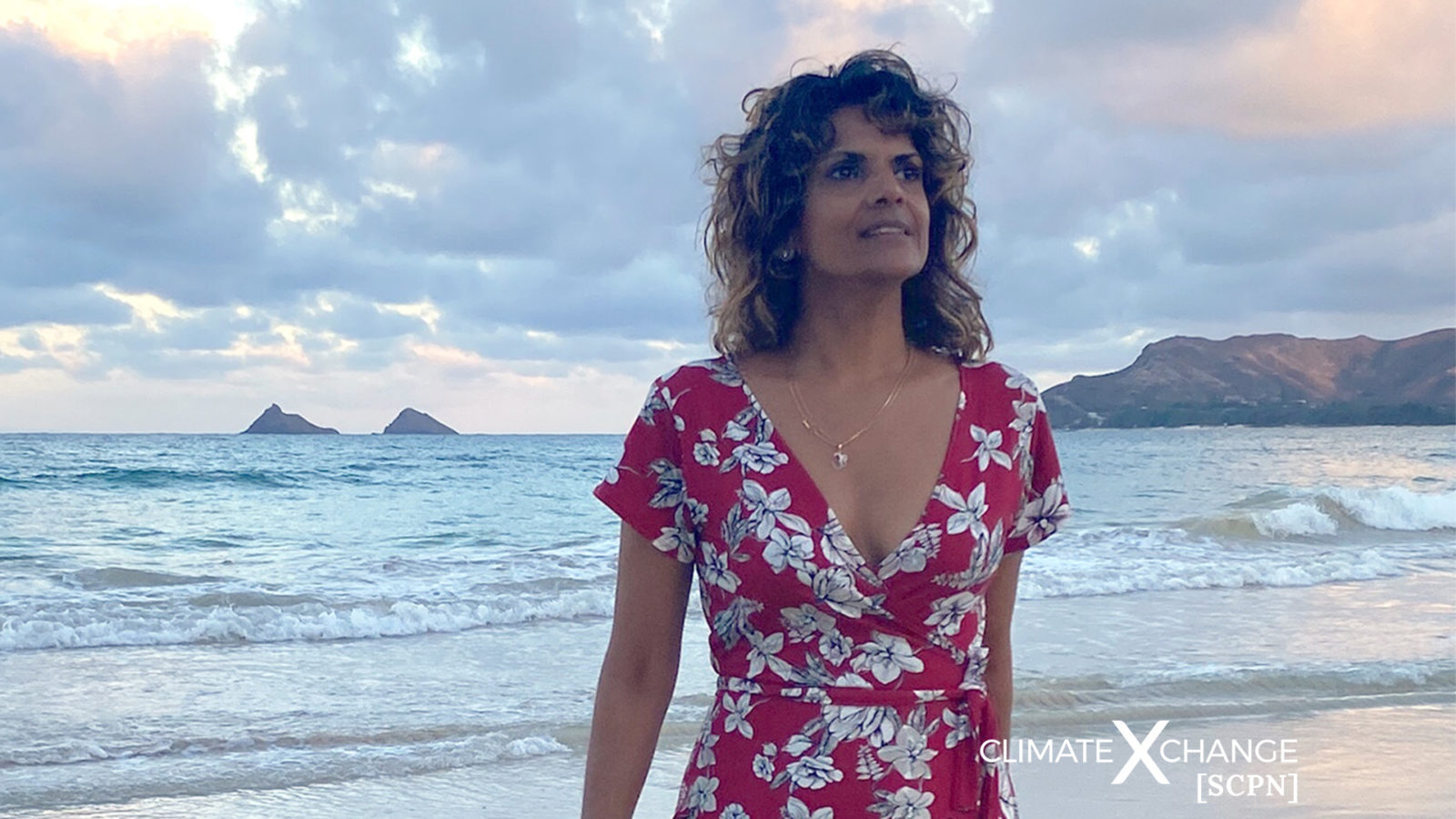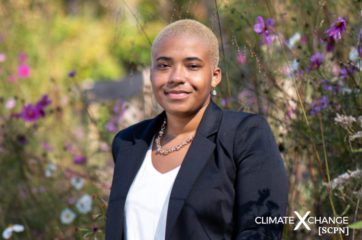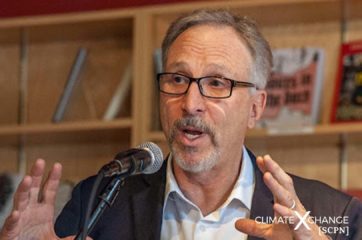All across the country, members of our State Carbon Pricing Network (SCPN) are fighting to make an impact on climate change in their communities. We have individuals in our Network from all 50 states, each experiencing climate change differently in their local areas and finding unique solutions to build resiliency efforts.
Anu Hittle is the Climate Change Mitigation and Adaptation Coordinator for the Hawaii Department of Land and Natural Resources, and an active member of the SCPN. She’s had a long and storied career working to fight climate change.
Noa Dalzell
Anu, thanks so much for taking the time to speak with me this afternoon. I think the first time I met you was actually at COP 25, in Madrid, and ever since then, I’ve followed your work and Hawaii’s climate progress quite closely. I’m really excited to learn more about your work in the climate commission and about how you ended up where you are today. Could you start off by telling me how you got involved with climate policy at the beginning of your career?
Anu Hittle
I started working in the climate space right after I graduated from Columbia University with a Masters in International Affairs. I was applying to international organizations and ultimately got a job at the World Resources Institute. I was an intern for the head of WRI, Gus Speth, who was a real climate champion and a role model to me. He was a great first boss to have because he was so busy and he just kind of let me go feral. I went to everybody at WRI and started talking to them, and ended up with a publication on toxic waste exports. Gus asked me to see what the people at the World Resources Report, WRI’s annual publication, needed. They said, “why don’t you put together how much greenhouse gas emissions the world emits?” I was like, “okay!” So I started putting together that information, and I like to joke that thirty-something years later I am still putting together greenhouse gas emission inventories. I am always looking at how GHG emissions affect the climate and what Hawaii — or wherever I am — can do about it.
Noa Dalzell
What a cool first experience. Where did you go after WRI?
Anu Hittle
I’ve worked everywhere from Greenpeace, where I was doing climate advocacy and research, to consulting firms that did work for EPA — really a wide breadth of things. Then, I taught at Washington University at St. Louis, and I was teaching a course on global governance and collective action, and climate is the perfect space for that. I was taking students to the Conference of Parties, we started with COP 20. The students started that initiative, and I put together a class to prepare them; Washington University is now one of the co-leads for the Research and International Nongovernmental Organizations (RINGOs).
Noa Dalzell
That’s awesome. How did those experiences prepare you for your current role leading the Hawaii Climate Commission?
Anu Hittle
Basically, I’m supposed to coordinate the efforts of the state of Hawaii, under the mandate of Act 32. I staff the Commission and I work on their priorities. We work on both mitigation and adaptation, with specific focuses on ground transportation as well as sea level rise and impacts, because that’s important to Hawaii. My job is to work with everybody from the very local level, to our stakeholder groups, to our counties, all the way to the global level. We need to connect all those efforts.
Noa Dalzell
What would you say is an accomplishment of yours from during your tenure at the Commission?
Anu Hittle
I’ve been here for about two and a half years now, and we’re halfway to our Commission’s lifespan, which is five years, though hopefully, it gets extended. In terms of bringing all the information together for the state, and co-creating some of the knowledge and the work that is going on here, really bringing together a very collaborative process. One thing we are particularly proud of is what we’re trying to brand as Climate Ready Hawaii, an effort that will help Hawaii adapt to the impacts of sea level rise and be more resilient overall, be climate ready. It encompasses a lot of adaptation work, assessing how departments can incorporate climate-induced risk across their planning. On the mitigation side, we’re beginning to work on the carbon footprints of departments’ work, looking at the social cost of carbon, we’re just initiating those discussions.
Hawaii is a very rich ecosystem — naturally, culturally, and intellectually — so you don’t want to just come into a place and say, well, we’re going to start from the beginning here. There is no beginning. My first task was to try to figure out what was already going on, and how you move those efforts along in the direction that everyone wants to go, toward a common vision. We’ve really been in the process of creating that common vision, and Climate Ready Hawaii is a reflection of that in some ways. All of our work is based on what other people have already done, what the Native Hawaiian communities are doing, what other departments, like the Energy Office, are doing.
Noa Dalzell
Can you tell me a little bit more about the work the indigenous communities are doing in the state?
Anu Hittle
The pandemic has shone a light on many things. It’s definitely shining a light on what Native Hawaiian communities have long been saying, which is that we need a sustainable form of tourism, more sustainable livelihoods. We cannot just keep doing it the old way, and completely rely on bringing in more and more tourists. People are really looking at what sort of economic models can sustain Hawaii, what sort of health models, food models — we’re all working toward self-sufficiency and resiliency. Those are some really interesting conversations that are going on, and there are very wise people who are putting together some of these things.
Noa Dalzell
Super cool. Switching gears a bit, before we run out of time, I wanted to ask you about your perspective on the state’s carbon pricing bill last session.
Anu Hittle
Oh, yeah. We actually wrote up a little blog piece about that. The bill passed the Senate and the day that it was supposed to be heard by the House was the day we shut down for COVID-19. The bill this year also introduced an equity angle in the form of income-based tax credits. For us, it was a really interesting exercise that created some good discussion. It didn’t mention a dividend option, but our position was that it would do well to consider one. The bill also proposed to create a special fund for adapting to climate change, and in Hawaii, this is really important. It’s not just about cleaning up our carbon footprint, we also need to adapt to a changing climate, especially given sea level rise. Life here is expensive, and climate-induced events make it even more expensive. The bill proposed that fund, but it wasn’t necessarily geared to the most vulnerable, lower-income populations. That is what we would have proposed they do.
Noa Dalzell
Thanks for breaking that down, Anu. To close, I wanted to ask you, what concerns you most about the pathway forward, and, on the flip side, what makes you most hopeful?
Anu Hittle
It’s very easy to get discouraged, and to say, this is never going to be solved. But when you look at other major problems, like poverty and health, they’re not solved, but we are getting better at those things; the world is generally richer, generally healthier. So, it’s going in the right direction. I am hopeful that we will go in the right direction. If you look at things that have happened in recent years — just eleven years ago, the iPhone was invented — you realize we’ve been able to achieve so much in so little time. Because of the iPhone and cloud technology, we were able to turn so many things around, ride-share, like Uber and Lyft, unseated the decades-old taxi industry. There are all these disruptive things that happen when technologies converge and the time was right. But it took a really long time to get to that point, and ultimately, it’s not just a technology fix. Everything came together – the regulations, technology, the will – all the conditions were right. I don’t see why that can’t happen for climate change and the different pieces that we need. So, I’m hopeful.









